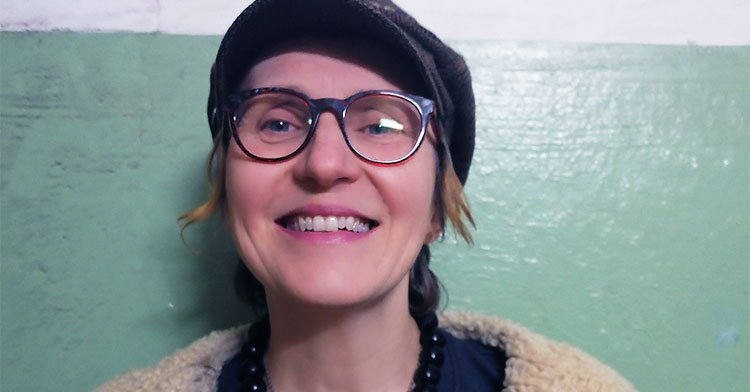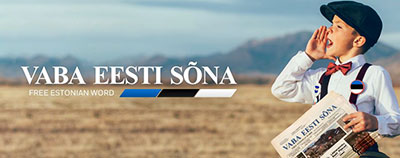This article appeared in the “Üleilmse eestluse” / “Global Estonian” November 2022 newsletter in both Estonian and English
(www.globalestonian.com)

There used to be an unwritten rule in Estonian communities abroad that CHILDREN, ANIMALS and ELDERS were always spoken to in Estonian.
Slightly older children immediately picked up on how this worked. It was the result of upbringing and following by example, which ensured that things were passed on. There was an understanding that we were all working together for the greater good of a system that brought us endless joy.
Acknowledging this unwritten rule marked an interesting shift in language use. Something to the effect of: “As skillful language jugglers, we often can’t be bothered to speak to each other in Estonian, but we know very well when it’s the right time and place. And so we switch languages to support those younger and out of respect for our seniors.” The fact that people communicate with their pets (and animals in general) in their native language is a matter of the heart and thereby very telling.
As for following generations born abroad, the “children-animals-elders rule” that has been in force for over half a century is generally no longer perceived or followed. The telephone message game has experienced a disconnect. But that’s not all. Rumour has it that in most Estonian diaspora communities, speaking exclusively Estonian is no longer possible – natural or logical, polite or fair; in other words sustainable. On the other side of the Atlantic, English-language support must be used. This is indeed true, sometimes.
Attitude leads the way, exposure sets the table.
It seems to me, as both a former member of the community and currently as an observer from afar, that for some time people have been unduly quick in giving up using Estonian, often in situations where it is by no means the only option. The reasons for this change are easy to understand: a decrease in the languge proficiency of native Estonian speakers (uncomfortable to speak, limited vocabulary) and welcoming and including non-Estonian speakers. Not wanting any child, parent or other interested person to feel excluded or inferior. This desire to be welcoming is human, it’s also a familiar phenomenon in Estonia. But this should not occur at the cost of the focus language becoming secondary, particularly at a time when it needs unprecedented support and a valuable resource (currently still) exists – in the form of a significant number of native speakers.
Is the desire to include people of other backgrounds in learning a second language exclusion? Would Estonian camps abroad be void of young people if we adopted a bold new direction and offered more innovative Estonian language education tailored specifically to them? In the past, families were the main source of Estonian language, now all families need wider community support and cooperation.
We aren’t supporting, but in fact cheating the enthusiastic youth of our community, if we don’t provide them with opportunities to HEAR Estonian being spoken (by us, the older generation), to READ it (for example on social media, where people seem reluctant to communicate in Estonian) and to PRACTICE it in a friendly and encouraging multigenerational environment, at any and all levels of proficiency.
Press your language button!
One summer morning about five years ago, the dining hall of Jõekääru was full of campers who had just finished their semolina porridge and were ready to enjoy a new day. (Jõekääru is located about a hundred km northeast of Toronto and just celebrated its 70th summer of operation.) It was Estonian language week, the first of five weeks of camp,but the only one promising (attempting) full language immersion.
I asked the campers if anyone spoke any languages other than Estonian and English. There arose a sea of hands. They took turns explaining with obvious pride who was studying and knew how to speak what. It being Canada, many were in French immersion programs. (One parent later admitted that her sons speak French better than Estonian since there’s zero tolerance for English in immersion classes.)
I went on to ask where the kids thought their languages come from? “From your mouth!” “Your brain!” “From your voice box.” “But do you feel somehow different when you speak in Estonian? With whom do you speak it?” Answers resounded: with my father, mom, grandparents… With my best friends – here. “But perhaps your Estonian comes from in here as well?” (I pointed to my chest.) “Because it is quite special. And it’s how you communicate with your grandmother. There’s room for many languages in your heart – there’s no limit. It stretches like plasticine. So, polyglots, how do you switch from one language to another? Because sometimes we’re reminded that we should seize the moment and speak our so-called secret language. You’re no doubt familiar with the old rhyme: “Eesti keeles, pea sa meeles!” (In Estonian, don’t forget!).
To change tracks from one language to another, you could benefit from some kind of lever or pushing a button. Have you seen the classic campfire sketch “Pressi punane nupp!”? (Push the red button.) Let’s try and see how pressing your language button works. Everyone speak in pig Latin! (A cacophony of vowels can be heard.) Ok now, ready?” I made a fist and pressed down in the middle of my chest.
Think first, then speak
There are many possibilities: “I’m Estonian, I just don’t speak it,” and “I’m not Estonian, I just learned to speak it.”
Let’s not underestimate our abilities, wishes and dreams, or those of today’s bright young people. I’d like to ask them if they could imagine there being absolutely no one left who could speak Estonian at their favourite camps and communal places. That they were the last for whom access and exposure were available ahead of the impending abyss…
Young people teaching and setting an example for other youth is incredibly effective. If a young (or young at heart) Estonian-speaking leader or educator abroad is not aware of the huge potential of his/her influence as a representative of (possibly) the last generation of far-flung Estonian-speakers, then I encourage parents to offer support and remind (even demand) organisers that they would like their children to be spoken to in Estonian as part of community activities.
Young people, in turn, have a right to demand that we (who were gifted the language from birth), insist on speaking and writing it. For their sake, and the greater good. I have to ask why people who are used to speaking Estonian in person tend to chat with each other on social media in English? There’s no need to fear being rude towards others when the “See translation” button is in plain sight. By consciously pushing your language button and switching tracks you could simultaneously be doing someone a significant language favour. Every little opportunity is a learning opportunity to be relished.
Riding an eagle like old Kalev, Estonia now comes to visit everyone personally, in every possible device on land and water. With the freedom and capability of our ancestral land in the era of technological wonders: online radio, podcasts, apps and thousands of dizzying images, in addition to tv, films, literature and music, there are antidotes to abandoning and losing language. Estonian radio into the speakers of Toronto’s new Keskus and children’s camps 24-7! Not only the residents of Ehatare retirement home know how to appreciate such millennial treats. Play an audiobook or listen to “radio theater” in the car to rekindle a relationship with the voices of your foreparents.
Fortunately, Estonian newspapers abroad continue to be a fantastic source of language education delivered to your easy chair. They can rightly be seen as an extension of our supplementary schools. Continuing education before packing for “adult summer camp” Kotkajärve Metsaülikool (Forest University) style. It would also be great to see more alumni trying their hand at contributing writing in Estonian and the papers’ social media channels taking advantage of the potential to grant priceless tidbits of underdog language exposure in an increasingly globalised world of default English.
Working on your languages is often a test of will, but it always pays off. It’s not stepping on others’ toes or exclusion. Using your language button is a way of paying it forward with the added bonus of helping to keep dementia at bay.
Riina Kindlam,
Toronto-born, has been living in Estonia for over 20 years working as a writer, translator and tour guide.
globalestonian.com















